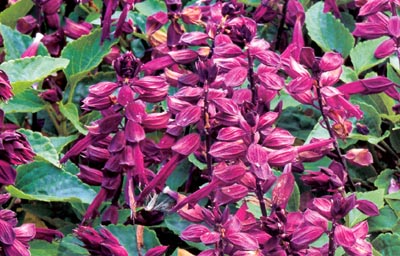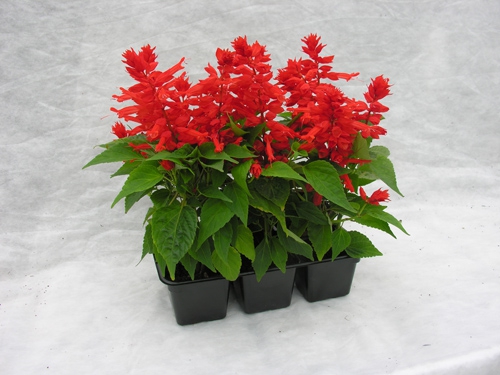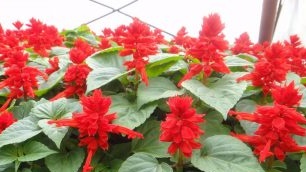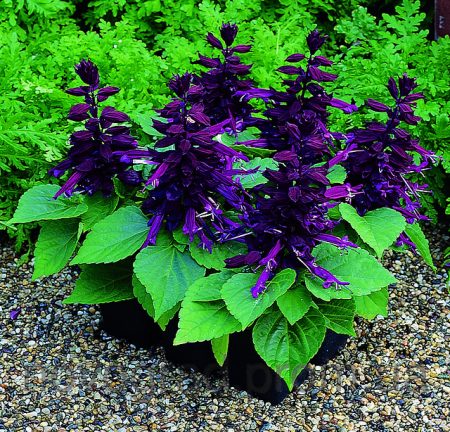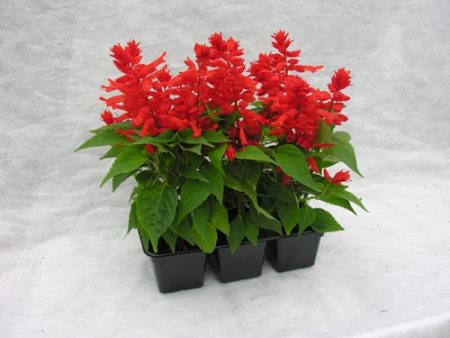 Sage, or else Salvia - very beautiful and healthy flower for a summer residence.
Sage, or else Salvia - very beautiful and healthy flower for a summer residence.
Depending on the varieties, the number of which exceeds several hundred, these herbaceous plants can live only one year, and possibly several years. The family of labiaceae is distributed throughout the globe, and is often used as a decorating plant. However, the main advantage of Salvia is its healing properties.
Description of Salvia and its royal appearance
Often, sage bloom has a magnificent royal look, for which many of its varieties received the corresponding names: brilliant, royal, sparkling. Due to the many variegated shades of flowers and the specific structure of the branches and stem, salvia reaches a certain perfection.
Sage reaches abundant flowering from the beginning of summer until the first frosts that occur around mid-autumn. At the same time, the seeds become ripe in late August, but you can collect them several times.
Starting to consider all the important points for caring for plants, it would not hurt to understand the most common varieties of salvia (photo of flowers, seedlings). When to plant (the video will help to do this correctly) and what subtleties are associated with this process, also depends on the type of flower. The following garden varieties can be considered the most popular:
Recommended:Tigridia - planting and care in the open ground.
• shiny salvia;
• powdery salvia;
• horminum salvia (white marble).
It is safe to say that sage, regardless of its variety, is rather whimsical and needs special careful care. Unfortunately, most gardeners trying to grow a plant for the first time do not immediately achieve the desired result: the sprouts die, the seeds do not sprout for unknown reasons, or its growth simply stops or flowering does not occur.
At the same time, difficulties with the cultivation and further cultivation of sage can be caused by a variety of factors:
• seed quality;
• the time chosen for landing;
• Unsuitable climate conditions;
• a kind of care.
Sowing seeds and preparing for planting
Recommended:Clematis - the best varieties for the Moscow region.
Having decided on an attempt to grow salvia, the first step will be the acquisition of the necessary seeds and soil preparation. Going to the store for salvia seeds of any variety, the main thing is not to forget about the shelf life of the seed. In addition, before the final choice of the manufacturer, it is advisable to first familiarize yourself with the reviews and recommendations of customers on the Internet. And in case of doubt about the quality of this product, you should definitely ask the seller for relevant certification documents.
We should not ignore the advice on preparing the soil for planting any type of sage, including powdery salvia (photo of flowers). Seedlings (when the time comes to plant) grows approximately 80 days after sowing. Recommended soil for sage should contain the right amount of trace elements and a sufficiently acidic environment. Any capacity for planting future seedlings is suitable. It can be a pot, an ordinary box, or a beautiful decorated flower pot, but at the bottom of the selected container you must definitely lay down the drainage, only after which you can start laying the soil. The soil in the tank should not reach the top side, leaving a margin of about two centimeters. Then you need to leave the newly planted salvia for a day, after covering the pot with polyethylene.
Recommended:How to care for geraniums in winter?
Ideal time for sowing
Planted seeds sprout in a short time, but further growth is much slower. Wanting to engage in the cultivation of salvia “white marble”, (photos of flowers, seedlings), when it comes time to plant it in the ground, the study of the subtleties and nuances can play an important role in this process. It is worth paying attention to the fact that the end of winter is considered the most convenient time for planting seedlings for sage. In just a couple of months, the salvia will become stronger and will be ready for the next transplant. From this it seems possible to draw a simple conclusion that many gardeners make a mistake in choosing the planting period. Sage feels great in the warm season.
Features of planting salvia
In more detail it is necessary to approach the cultivation of salvia in open soil. The composition of the soil should include sand and clay, and the optimal distance between plants is considered to be 20-30 cm. Carefully treating the root system, it is necessary to put sage in a wide deep hole, prepared in advance. Then sprinkle the plant with earth, without tamping the soil, and pour a small amount of water.
A bush of herbaceous sage, capable of perennial existence, can easily tolerate abundant sunlight, its lack, and even a strong wind. The only thing that can adversely affect his condition is excessive cold. The plant is rightfully called capricious, it requires serious and attentive care. But in return, having fulfilled all the recommendations for cultivation, blooming salvia (photo of flowers, seedlings) cannot but please the eyes of others. When it becomes necessary to plant in the ground, it is important to comply with all the rules and not to miss significant points.
Recommended:Anemone - planting and care in the open ground.
Also, do not neglect the possible causes of the disease and death of sage:
• the onset of frost;
• transferred infectious diseases;
• excess moisture in the soil;
• high level of soil oxidation;
• mechanical damage to seedlings during planting;
• the likely impact of weather conditions, the harm caused by animals.
In conclusion, it is important to note that gardening is not just a hobby. This is an opportunity provided to plants to grow safely and delight others with their splendor.


